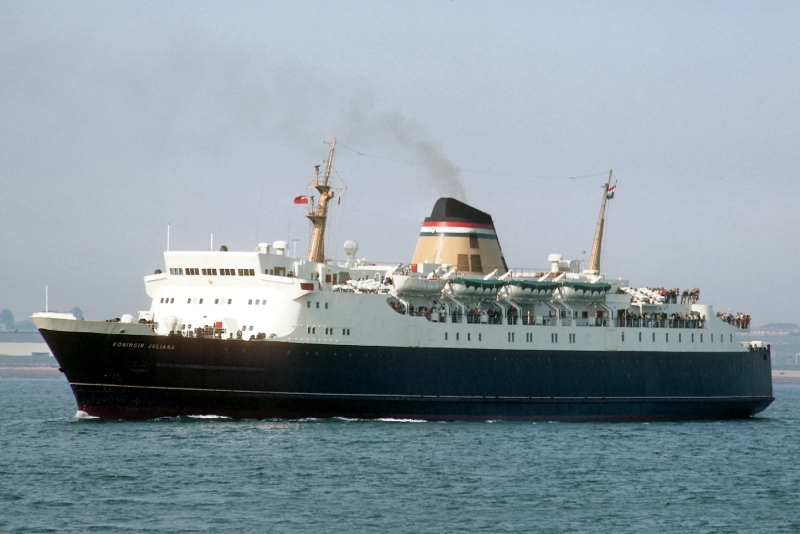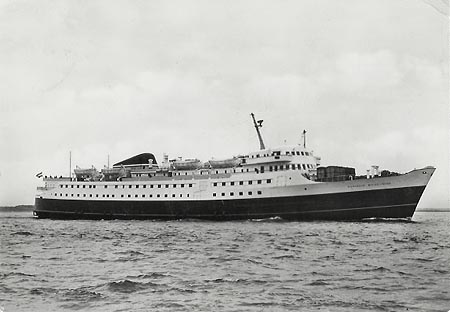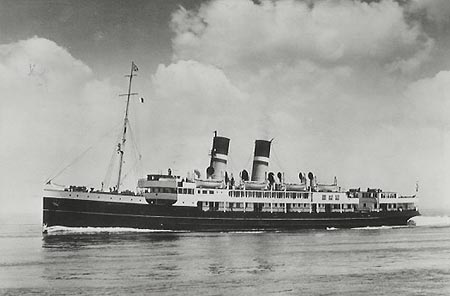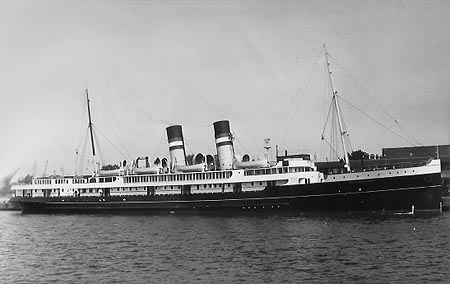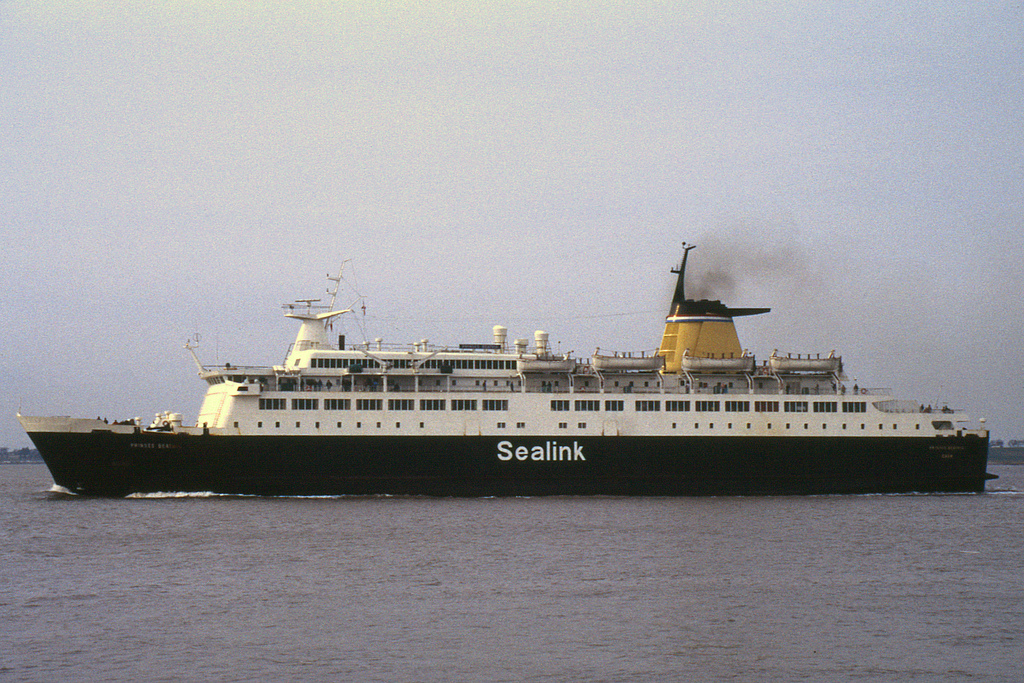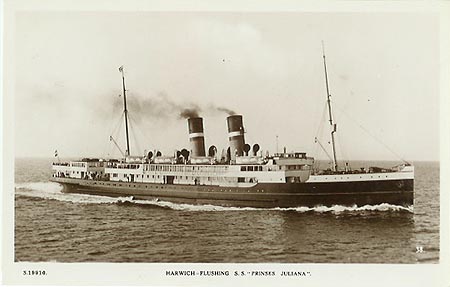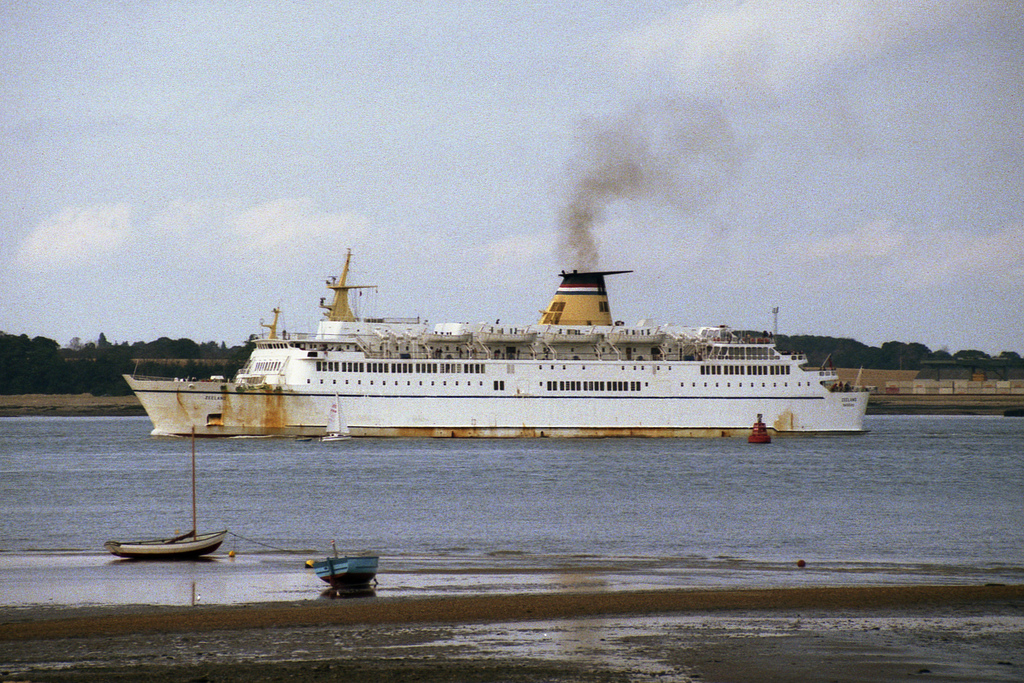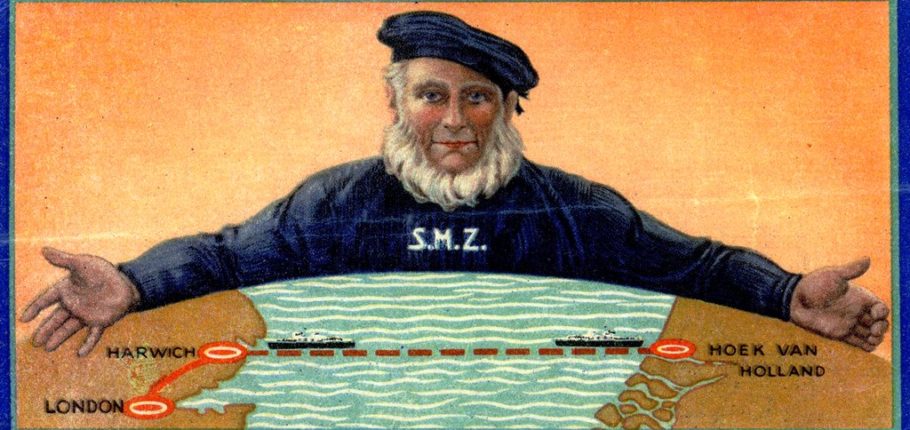
SMZ (Stoomvaart Maatschappij “Zeeland)
Stoomvaart Maatschappij Zeeland was founded in June 1875 and opened a service from Flushing to Sheerness in Kent on July 26 of that year. However, poor support led to the service being suspended for the following winter and re-opened on May 15, 1876 to nearby Queenborough. The Dutch port remained Vlissingen (Flushing) until after the Second World War, when it transferred to Hook of Holland. In 1927 an agreement was reached with the London and North Eastern Railway to switch the service to Harwich, and that agreement was further enhanced in 1946 after World War II when services were moved to the Hook of Holland, the company’s facilities at Flushing having been destroyed during the hostilities. In the meantime, British Railways had taken over from the LNER at Harwich in 1948 and the service evolved to a full co-operation, the two companies providing the night [B.R.] and day [Zeeland] services respectively employing four ships plus two relief vessels.
In 1968 with the introduction of car ferries, the SMZ and Sealink services were fully amalgamated, and in 1989 Swedish ferry operator Stena Line acquired SMZ.
Koningin Beatrix
- Built. 1985 (IMO 8416308)
- Yard. Van der Gissen de Noord
- Class of Ship. Passenger
- Operator. SMZ
- Route. Harwich – Hook of Holland 1986-1997
- Length. 164.61m
- Gross Tonnage. 31910
- Passengers. 1200
- Freight Capacity. 524 vehicles
- Speed. 20 Knots
- Status. SNAV Adriatico
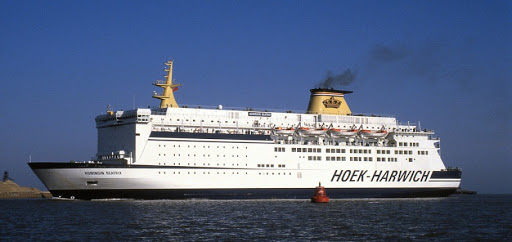
Koningin Beatrix
Koningin Beatrix was built in 1986 by Van der Gissen De Noord, for Stoomvaart Maatschappij Zeeland N.V. She was used on their joint Harwich-Hook of Holland service with Sealink. The SMZ service was marketed as Crown Line. In 1989, the SMZ operation was sold to Stena Line BV. Ownership of Koningin Beatrix passed to Stena Ab, and she was chartered to Stena Line BV.
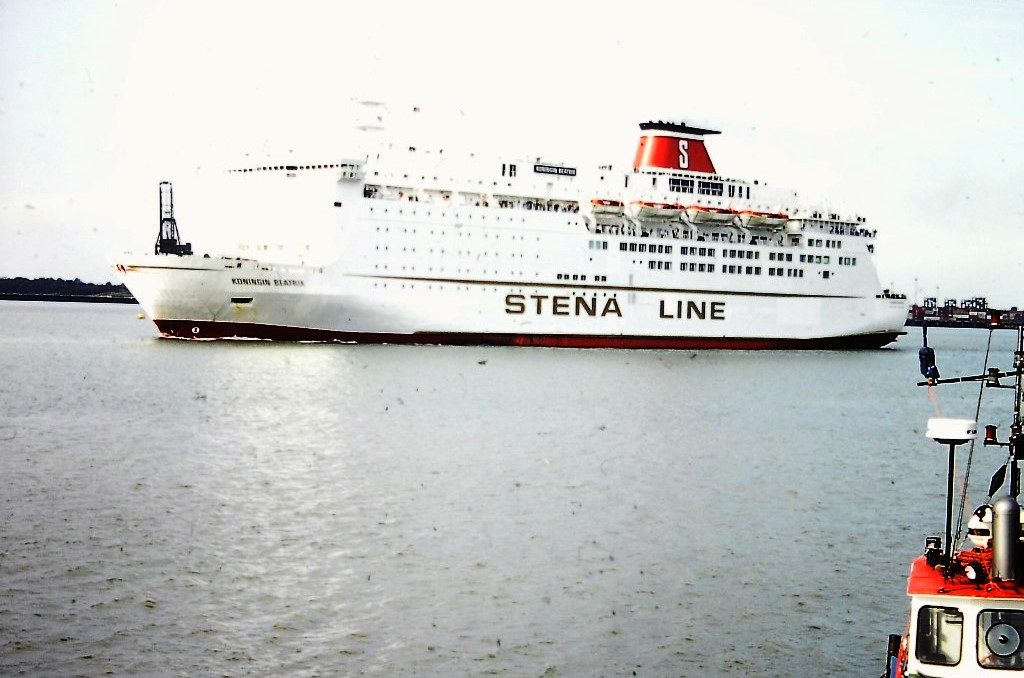
Koningin Beatrix
In 1997 she was transferred to the Stena Line Fishguard-Rosslare route, when replaced by HSS Stena Discovery. In 2002 she was transferred to the Karlskrona-Gdynia route and renamed Stena Baltica, swapping with Stena Europe.
In 2003 the Koningin Beatrix was transferred to the Karlskrona – Gdynia route and renamed Stena Baltica.
In 2005 the Stena Baltica was rebuilt at the Remontowa yard. The SEK 235 million. Investment included the refurbishment of the passenger facilities on decks 7, 8 and 9. A new vehicle deck was created from stripping the cabin accommodation on decks 5 and 6. Externally, a large vehicle door and ramp was constructed at the bow and number of lifeboats were also removed.
The Stena Baltica and her running partner MS Finnarrow were replaced on the Karlskrona – Gdynia route in 2010 by the Stena Vision and Stena Spirit. The ship was laid up in Lysekil. On the 24.th of January 2013, Stena announced the sale of the ship to SNAV. In February 2013 the ship was sold to SNAV, renamed SNAV Adriatico, and started the service by operating the route Ancona – Split.
Koningin Emma
- Built. 1939 (IMO 5519295)
- Yard. De Schelde
- Class of Ship. Passenger
- Operator. SMZ
- Route. Harwich – Hook of Holland 1939-1969
- Length. 380 ft.
- Gross Tonnage. 4135
- Passengers. 1800
- Speed. 24.5 Knots
- Status. Scrapped 1969
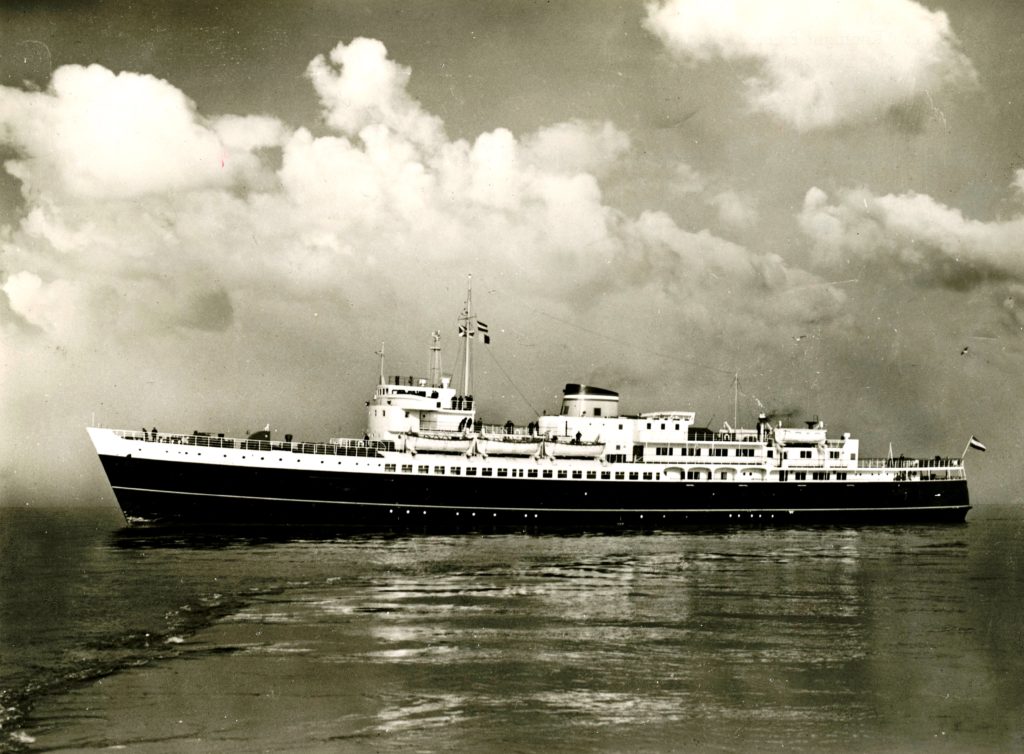
Koningin Emma
The Koningin Emma was built by Koninklijke Maatschappij de Schelde at Vlissingen and launched on 14th January 1939 by Queen Wilhelmina, daughter of Queen Emma, the consort of King William III.
Koningin Emma made her maiden voyage on 4th June 1939 but, two months later, after the outbreak of war on 1st September 1939, she was withdrawn from service and remained laid up at Vlissingen. However, on 10th May 1940, Germany launched its invasion of the Netherlands, dropping mines in the Scheldt estuary and bombing shipping, but both Koningin Emma and Prinses Beatrix safely escaped Vlissingen and fled to the relative safety of London, arriving there on 15th May. Two days later, the British Ministry of War Transport requisitioned both ships and adapted them for use as troop transports, fitting ’degaussing’ coils as protection against German magnetic mines, sailing them with their original Dutch civilian crews and each with a detachment of the Dutch elite Korps Mariniers aboard.
In January 1946, Queen Emma left East Asia to return to the UK, arriving at Portsmouth’s naval base on 15th February. Although Emma had her landing craft, weapons and other military equipment removed at the base. The Queen Emma arrived back at her home port Vlissingen on 29th April 1946 and handed over to the Dutch government, who officially handed her back to S/M Zeeland, to be renamed Koningin Emma.
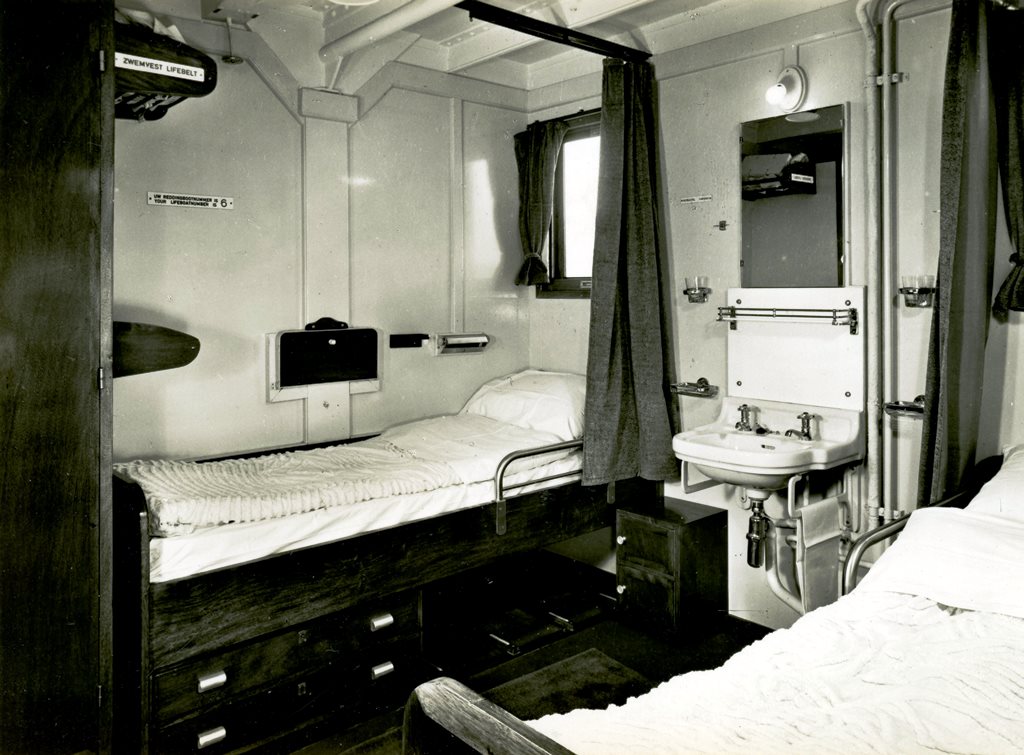
2 Berth Cabin
Post-war shortages of materials and labour meant that it was two years before the two sisters were fully rebuilt by ‘de Schelde’ and returned to service. Koningin Emma returned to service for the first time between the Hook of Holland and Harwich on 5th March 1948. She was followed on 31st May 1948 by sister Princes Beatrix. During their rebuild, their appearances changed from their original configuration when built. Noticeably, the cargo handling gear was not replaced and a smaller, slightly angled, more-modern funnel was installed. Also, the ships’ original grey hulls were now superseded by impressive black hulls. Reconfigured accommodation now provided for 1,423 day passengers or, on the occasions they stood in on night crossings, berth accommodation for 203 passengers in First Class cabins and 94 in Second Class dormitory-style sleeping areas.
Koningin Emma remained in service between the Hook of Holland and Harwich continually for the next 20 years until the end of 1968, when she was replaced by the new generation of RoRo passenger ferries and sold to Belgian shipbreakers Jos. de Smedt at Antwerp, being towed into the breakers yard on 21st December 1968 and recycled in 1969 after almost 30 years’ service.
Koningin Juliana
- Built. 1968 (IMO 6808806)
- Yard. Cammell Laird
- Class of Ship. Passenger Ferry
- Operator. SMZ
- Route. Harwich – Hook of Holland 1968-1994
- Length. 131 m
- Gross Tonnage. 6682
- Passengers. 1200
- Speed. 21 Knots
- Status. Sank 1998
Built in 1967 by Cammell Laird of Birkenhead as Koningin Juliana for Stoomvaart Maatschappij Zeeland of the Netherlands, it was used on the Harwich to Hook of Holland route until 1984 until sold to Navarma Lines and renamed Moby Prince.
Fire
At 22:03 on April 10, 1991, the Moby Prince left Livorno, heading to Olbia for a regular service, manned by a complement of 65 crew and 75 passengers. The ship was commanded by Ugo Chessa. While taking the usual dedicated route out of the harbour, the ferry’s prow struck the Agip Abruzzo, which was standing at anchor, and sliced through its tank number 7. The tank was filled with 2700 tons of Iranian light crude oil. At 22:25, the ferry’s radio operator broadcast a Mayday from the portable VHF transmitter.
The charred hull was moored at Livorno until 17 May 1998, when she made water and sank. The rusty wreckage was later raised and towed to Aliaga, Turkey to be scrapped.
The sinking of the Moby Prince was the worst disaster for the Italian merchant navy since the end of World War II.
Koningin Wilhelmina II
- Built. 1960 (IMO 5192987)
- Yard. N.V. Scheepswerf
- Class of Ship. Passenger
- Operator. SMZ
- Route. Harwich – Hook of Holland 1960-1978
- Length. 120 m.
- Gross Tonnage. 6628
- Passengers. 1600
- Freight Capacity. 60 cars
- Speed. 21 Knots
- Status. Scrapped 2001
Built at the N.V. Scheepswerf & Machinefabriek “De Merwede” shipyards at Hardinxveld, she was launched on 20th May 1959 by HM Queen Juliana, delivered to SMZ on 30th January 1960, and commenced her maiden voyage on the day crossings from the Hook to Harwich on 7th February 1960. She was named after HM Queen Wilhelmina, who reigned as Queen of the Netherlands for nearly 58 years from 1890 until 1948, having been born 1880 (ascending to the throne at the tender age of 10) and died in 1962 (the year after the ship’s launch), aged 82.
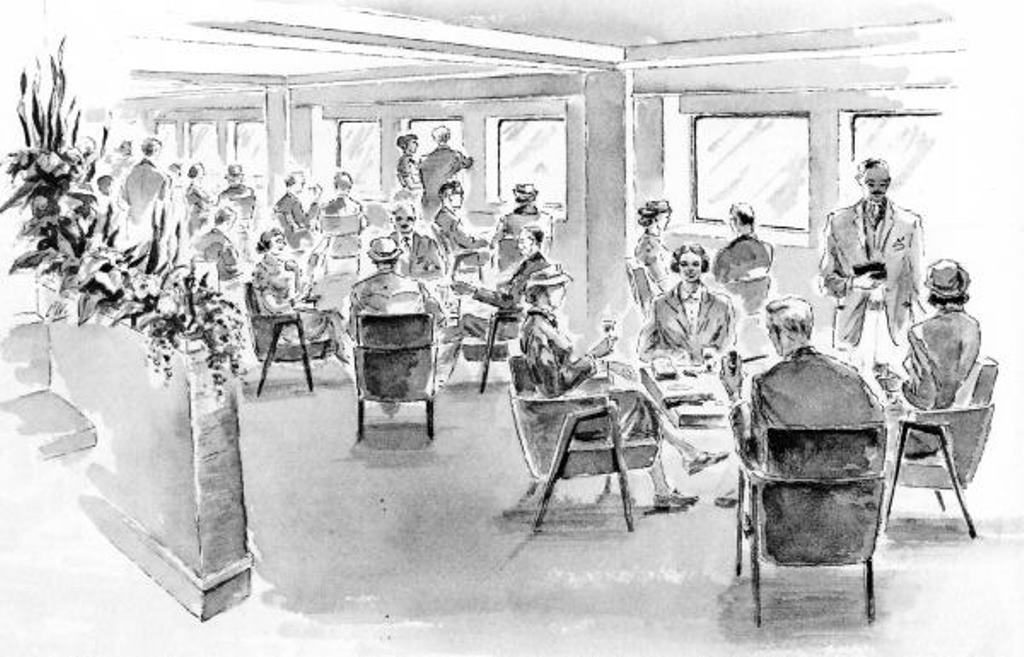
Koningin Wilhelmina
The m/s Koningin Wilhelmina’s low streamlined profile belayed the fact that she was 6,228 GT, 120 metres overall and, powered by two 12-cylinder MAN diesels, had a speed of 21 knots. When built, she was the first ship on the route to be fitted with stabilizers and a bow thruster unit. As the last but one of the classic pre-RoPax ferries, she had a capacity for 200 tons of cargo (loaded through two hatches; one forward, one aft) and certification for 1,600 passengers in two classes For First Class passengers, a spacious observation lounge was located under the bridge giving a splendid view at sea and, on the Boat Deck, there were ten Cabin De-Luxe, all fitted with ship to shore telephones. In addition to her cargo spaces and passenger facilities, she also had (on the main deck of the hull, forward of the engine room) a car garage with side-loading facilities for about 50 standard cars.
On 28th June 1978, Koningin Wilhelmina sailed from Parkeston Quay for the last time and, after discharging her passengers and cargo at the Hook of Holland, was placed in layup for sale at Vlissingen. The following year she was sold to the Greek-based Ventouris Group and, renamed Captain Constantinos, placed on their route between Piraeus, Syros and Tinos-Mykonos. In 1981, still with Ventouris Sea Lines, she was renamed Panagia Tinoy (although the name on the bow was later amended to Panagia Tinou) and, in the late-80’s briefly operated under the AK Ventouris brand until returning to Ventouris Sea Lines. In 1994, however, she was displaced from the ferry route and, renamed Artemis, spent a year as a cruise ship based at Crete, operating day cruises until the bankruptcy and collapse of the Ventouris empire in 1995.
Artemis (ex Koningin Wilhelmina) was quickly acquired by Piraeus-based Minoan Cruises and placed on days cruises from Heraklion to Rethymno, Aghios Nikolaos and Santorini. But on 30th April 2001 (by then 41 years old) the ship was sold to breakers and, under the Honduras registered ownership of Vickie Navigation Limited, renamed, Temis, was towed to India for demolition, arriving at Alang on 14th May 2001.
Mecklenburg II
- Built. 1922 (IMO 5605829)
- Yard. Kon Maats de Schelde
- Class of Ship. Passenger
- Operator. SMZ
- Route. Harwich – Flushing 1927-1939, (Rot) 1947-1949
- Length. 350 ft.
- Gross Tonnage. 2907
- Passengers. 376
- Speed. 22 Knots
- Status. Scrapped 13/05/1960
SS Mecklenburg II was transferred to the Flushing -Harwich route in 1927 were she remained until 1939. She returned to operate the Harwich-Rotterdam route from June 1947 until July 1949. Mecklenburg II was scrapped on the 13th May 1960 at Van Heyghen Freres S.A, Ghent.
Oranje Nassau
- Built. 1909 (IMO 5607890)
- Yard. Fairfield Shipbuilding
- Class of Ship. Passenger
- Operator. SMZ
- Route. Harwich – Hook of Holland 1945-1954
- Length. 364 ft.
- Gross Tonnage. 3053
- Passengers. 356
- Speed. 23.7 Knots
- Status. Scrapped 10/07/1954
In 1953 the 44 year old Oranje Nassau was chartered during the summer period to operate extra sailings. She left lay-up at Schiedam on 17th of July and operated just seven roundtrips, departing Harwich on Fridays and the Hook of Holland on Saturdays. During the week she remained on the British side and made her final arrival at Harwich on the morning of 30th August 1953 after which she proceeded directly to Schiedam for lay-up.
Oranje Nassau was sold for scrap on the 10th July 1954.
Prinses Beatrix I
- Built. 1939 (IMO 5528532)
- Yard. Koninklijke Maatschappij de Schelde, Vlissingen
- Class of Ship. Twin screw motor ship
- Operator. SMZ 1939-1968
- Length. 359 ft.
- Gross Tonnage. 4353
- Passengers. 297
- Freight Capacity. 25 cars
- Speed. 23 knots
- Status. Scrapped 19/12/1968
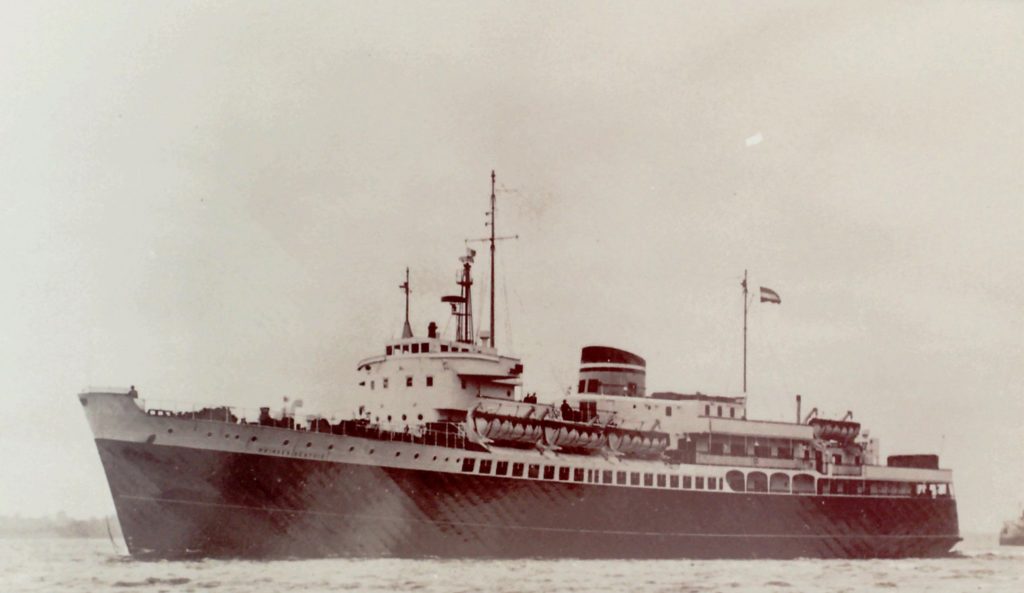
Prinses Beatrix I
The Princes Beatrix was built by Koninklijke Maatschappij de Schelde at Vlissingen and launched on the 25th March 1939 by Prince Bernhard, consort of Queen Juliana and father to the then Princess Beatrix.
Princess Beatrix & her sister were 4,135 GT and capable of carrying up to 1,800 day passengers (although normal capacity was limited to 1,000 max.) and, being pre-RoRo era, were capable of carrying up to 25 cars on a garage deck aft, served by a side-door in the hull. They were each powered by two 10-cylinder 2-stroke Sulzer diesels (built under license from the Swiss company by ‘de Schelde’) giving them a remarkable 23 knots service speed. In fact, during Koningin Emma’s sea trials, she reputedly recorded as speed in excess of 24.5 knots.
Princes Beatrix made her maiden voyage on 3rd July 1939 but, two months later, after the outbreak of war on 1st September 1939, both were withdrawn from service and remained laid up at Vlissingen. However, on 10th May 1940, Germany launched its invasion of the Netherlands, dropping mines in the Scheldt estuary and bombing shipping, Prinses Beatrix safely escaped Vlissingen and fled to the relative safety of London, arriving there on 15th May. Two days later, the British Ministry of War Transport chartered requisitioned and adapted her for use as troop transport, fitting ’degaussing’ coils as protection against German magnetic mines, sailing with their original Dutch civilian crews and with a detachment of the Dutch elite Korps Mariniers aboard.
Post-war shortages of materials and labour meant that it was two years before the two sisters were fully rebuilt by ‘de Schelde’ and returned to service. Koningin Emma returned to service for the first time between the Hook of Holland and Harwich on 5th March 1948. She was followed on 31st May 1948 by sister Princes Beatrix. During their rebuild, their appearances changed from their original configuration when built. Noticeably, the cargo handling gear was not replaced and a smaller, slightly angled, more-modern funnel was installed. Also, the ships’ original grey hulls were now superseded by impressive black hulls. Reconfigured accommodation now provided for 1,423 day passengers or, on the occasions they stood in on night crossings, berth accommodation for 203 passengers in First Class cabins and 94 in Second Class dormitory-style sleeping areas.
The classic Princes Beatrix remained in service between the Hook of Holland and Harwich continually for the next 20 years until the end of 1968, when she was replaced by the new generation of RoRo passenger ferries and sold to Belgian shipbreakers Jos. de Smedt at Antwerp, being towed into the breakers yard on 21st December 1968 and recycled in 1969 after almost 30 years’ service.
Prinses Beatrix II
- Built. 1978 (IMO 7637149)
- Yard. Verolme Shipyard
- Class of Ship. Passenger
- Operator. SMZ
- Route. Harwich – Hook of Holland 1978-1986
- Length. 131 m
- Passengers. 1500
- Freight Capacity. 3509 cars
- Speed. 21 Knots
- Status. Awaiting Scrap 2021
Built in 1978 by Verolme Shipyard, in Heusden, The Netherlands and worked for Stoomvaart Maatschappij Zeeland on their joint Sealink route between Hoek van Holland and Harwich, Parkeston Quay. She was named and launched by H.R.H. Princess Beatrix on 14 January 1978.
Brittany Ferries bought the ferry on 1 October 1985, and after chartering it for a year back to SMZ, renamed it Duc de Normandie, operating between Portsmouth and Ouistreham from 5 June 1986. She ended her Brittany Ferries career on this route, her final sailing being on 30 September 2004.
Currently awaiting to be scrapped as the ” Damla” – Alang, India January 2021.
Prinses Juliana II
- Built. 1920 (IMO 5605196)
- Yard. Kon Maats de Schelde
- Class of Ship. Passenger
- Operator. SMZ
- Route. Harwich – Flushing 1927-1940
- Length. 350 ft.
- Gross Tonnage. 2907
- Passengers. 376
- Speed. 22 Knots
- Status. Scrapped 1940
Prinses Juliana II transferred to the Flushing – Parkeston Quay route in 1927 and was bombed by German aircraft on the 12 May 1940 whilst taking troops from Flushing to Ijmuiden and later broke in two.
Zeeland
- Built. 1973 (IMO 7230599)
- Yard. Ateliers & Chantiers du Havre
- Class of Ship. Passenger
- Operator. SMZ
- Route. Harwich – Hook of Holland 1984-1986
- Length. 128m
- Passengers. 1500
- Freight Capacity. 270 cars
- Speed. 21.5 Knots
- Status. Marko Polo
- 19/08/1973 Larvik-Frederikshavn.
- 30/03/1984 Renamed Zeeland.
- 01/04/1984 Hoek van Holland-Harwich.
- 01/04/1984 Transferred to Admiral Shipping Ltd, Nassau, Bahamas.
- 11/1985 Sold to Stena Ab, Gothenburg, Sweden.
- 02/04/1986 Renamed Stena Nordica.
- 23/11/1988 Sold Adriatic General Sh Liberia Renamed Marko Polo.
- 10/01/1992 TT-Line, Hamburg, Germany.
- 1993. Olympic Ferries. Bari-Igoumenitsa-Patras.
- 1994. Compagnie Marocaine de Navigation.
- 1995. Ancona-Split.
- 2002. Rijeka-Dubrovnik-Bari.
- 2004. Rijeka-Zadar-Split-Stari Grad-Korcula-Dubrovnik-Bari.
In January 1989, the company remarketed itself as Crown Line but, soon after, the Dutch Government sold its 70% interest in SMZ to Swedish-based Stena Line’s Dutch subsidiary, Stena Line Holland BV, thus ending a 114 year history.
We are adding more information to this site on a regular basis, if you wish to submit any photos or provide any information, then please use the contact page at the bottom of the screen.
Copyright Ownership.
We attempted to get the consent of copyright holders to use this material for nearly all of the photographs on the website.
In the few cases where names are available, a thorough search was made using telephone directories, photographic copyright directories, People Search and Google Area Search. None of the copyright owners could be traced in this way and we believe we have exhausted all reasonable avenues.
The consensus opinion of these authorities was that if any two of the following situations applied we would be deemed to have taken sufficient action to avoid infringing copyright laws:
- Reasonable efforts made to contact the copyright holder
- No financial gain will be made in relation to the photos
- A letter is obtained from present owner of photos
- There is a proviso included stating that if offence is caused document will be removed
The website owner undertakes to remove any photograph from the website where offence is caused. All the above conditions have therefore been met.
Header Photo: Koningin Beatrix (1986), photo by John Wray
← Stena Line RMT (Regie voor Maritiem Transport) →
